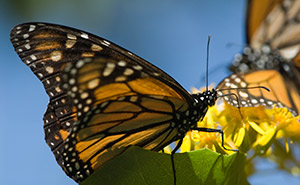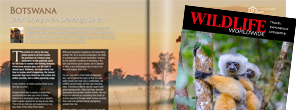A UNESCO World Heritage site, the Monarch Butterfly Biosphere Reserve plays host to approximately 60 million butterflies during their epic migration. Resident wildlife species include: white-tailed deer, coyote, long-tailed weasel, grey fox and various species of hummingbird.
The monarch butterfly migration is an extraordinary and yet unexplained natural phenomenon. During their short life cycle monarch butterflies pass through four stages – egg, larvae (caterpillar), pupa (chrysalis) and adult – and each year there are four complete generations of butterfly. In February and March, the fourth and final generation of monarchs emerges from hibernation, and after mating they migrate north and east to find a place to lay their eggs. This act starts the cycle once again and is the first generation of the new year.
Between March and April the adults lay eggs on milkweed plants, which take around four days to hatch into larvae. For the next two weeks the caterpillars do little else other than eat milkweed. At the end of this period, each fully-grown caterpillar attaches itself to a leaf or stem using its silk, and starts its metamorphosis into a chrysalis.
Seen from outside, during the ten days of the chrysalis phase little or nothing appears to happen, however this is a time of rapid change. Within the chrysalis the body parts of the caterpillar undergo a remarkable transformation, to become a butterfly. The adult butterfly emerges from the pupa and flutters off to feed on flowers for the remainder of its lifespan of anything from two to six weeks.
This first generation of monarchs dies after laying the eggs for generation number two, which is born in May and June. The third generation is born in July and August. These butterflies all pass through an identical four-stage cycle, perishing some two to six weeks after reaching maturity.
The fourth generation, born in September and October, goes through a similar process except that – instead of dying after two to six weeks – this generation migrates up to three thousand miles to the warmer climes of Mexico and California, to live for six to eight months until the cycle starts again.
No other butterflies migrate like the monarchs of North America. Even more amazingly, the butterflies that make the long and perilous journey are the great-great-grandchildren of those butterflies that left the migration place the previous spring, yet somehow they find their way to the same roosting spots, sometimes even the same trees.This amazing story ensures that the population of monarch butterflies continues to thrive from year to year.
Monarch Butterfly Reserve is 560 square kilometres in size and located in the mountainous state of Michoacan in the Trans-Mexican Volcanic Belt.
View suggested itinerary












